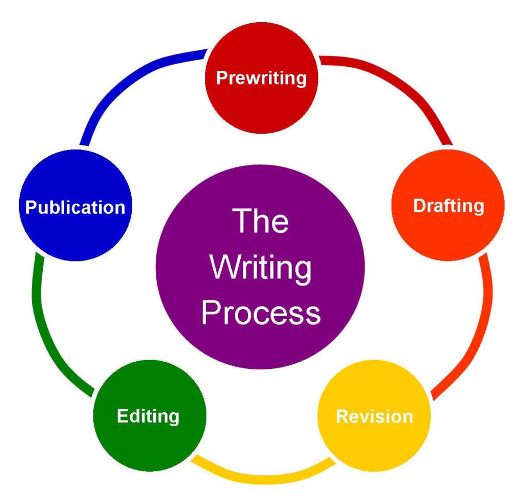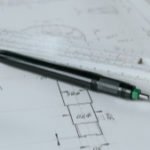How to write a thesis report for engineering?
Brief highlights
- Writing a well designed thesis report is of paramount significance for an academic researcher.
- A thesis report should be able to clearly describe the reason of research or study conducted and the associated problems or challenges.
- Besides discussing problems, a thesis should also emphasize on solution of the problem and discuss the progress made till date.
- Thus a thesis need to well-planned and should be strictly adhering to the perception of its audience.
Background
A thesis can be described as a written record of the academic work that has been assigned to a candidate. It can also be described as a means to communicate the ideas of author towards a particular technology that aims to fulfill the needs of academia industries. In some cases the thesis also discusses the obstructions or hindrances in the path of industries and provides an optimal solution to solve these problems. Hence, it can be asserted that a thesis is not only a technical document, but a means of communication to a particular segment of audience. Thus in order to reach those audiences it is imperative that the thesis should be well written and well planned (Husky 2018). This requires a thesis to follow a proper format and certain specifications mentioned by the concerned authorities. A thesis should hence include certain key headings that can be helpful for the audience in understanding the motive of writing that thesis.
In addition, the process of developing a thesis includes certain milestones such as preparing the topic, discussing the significance of topic with the concerned person, planning and developing text relevant for the topic, discussing and editing the text and so on (Chandrasekha 2008; Chandrasekhar, Ghosh, and Roychowdhury 2006). The processes or steps to be followed while developing a thesis are as follows:
- Prewriting
- Drafting
- Revision
- Editing
- Publication

Key Sections of Thesis
In order to write a good thesis it is necessary that the sections or chapter of the thesis are in a proper order and the text presented is interlinked (Hardt 2017). This helps the reader to understand the point of focus of thesis (Mumbai 2020). The order in which these chapters should be presented is as follows.
- Introduction
- Literature review
- Methodology and experimental set-up
- Mathematical modeling
- Conclusion and recommendation
- Future scope
- References
- Appendix
A snippet of each of these chapters is given in the subsequent sections.
Introduction: The introduction of a thesis discusses the reason or aim of writing the thesis. It also emphasizes on the problem associated with the topic or technology discussed. In some cases the chapter also briefs about some of the key works performed by other researchers.
Literature review: In this chapter the techniques applied by other researchers to resolve the issue are discussed by the author. The chapter discusses the major works performed in similar domain and highlights the issues that other researchers have failed to resolve.
Methodology or experimental set-up: In this chapter the methodologies used to fulfill the objective of thesis are discussed. In addition the apparatus or other experimental procedures are also presented so that the reader or audience gets a complete idea of how the aim is fulfilled.
Mathematical modeling: There are some cases when the model developed involves coding or use of certain software. In this case this chapter presents the code used for implementation of model developed.
Conclusion and recommendation: In this chapter the summary of the thesis is presented such that the author mentions his findings and final results obtained. Additionally, the chapter also discusses the recommendations that can helpful for the other researchers. These recommendations are based on the results obtained.
Future scope: In this part of the thesis the future scope or application of the work presented is discussed. It describes whether the work performed can be helpful in future for other industries and how it can be achieved.
References: In this section the references or citation used by the author are presented.
Appendix: This is the last but important part of a thesis and it presents the detailed calculation etc which are otherwise not mentioned in the thesis.
Characteristics of a thesis
In order to write a well oriented thesis it is necessary that the thesis adheres to certain characteristics which make the text presented clear and crisp. These characteristics are as follows:
- Style: Style of writing a thesis is the most important aspect. It enables the audience to gauge your English writing skills. Contrary to using difficult words, a thesis should be written using simple words that make the audience clearly understand the idea that authors wish to communicate.
- Linking chapters: While writing a thesis it should be borne in mind that the readers feel comfortable and are able to synchronize the ideas communicated only if there is a link between the texts. In addition linking chapters also establishes continuity for the thesis.
- Titles: The sub-headings or titles used in the thesis should neither be too long nor too short. Rather they should be clearly describing the text that they include.
- Ambiguity and clarity: Both ambiguity and clarity have their own place in the thesis. While ambiguity arouses the excitement of audience the clarity of text enable the readers to clarify their doubts.
- Precision: It should be reflected in the thesis especially when the work is quantitative. It influences the writing and as well as work done in the thesis.
- Brevity: It is a common scenario that while gathering information or collecting data for our work we come across plenty of sources. However, as discussed previously the work performed should be clear and concise. Thus there should not be repetition in the thesis.

Summary
Thesis writing is an important task assigned to the candidates pursing engineering. A thesis written reflects the ideas and concepts of author and his knowledge towards the idea being presented. Thus while writing a thesis one should follow the guidelines and formats mentioned. Also one should be clear about the different sections to be included in thesis and their length.
References
- Chandrasekha. 2008. “How to Write Thesis.” https://www.student.uwa.edu.au/__data/assets/pdf_file/0007/1919239/How-to-write-a-thesis-A-working-guide.pdf.
- Chandrasekhar, C. P., Jayati Ghosh, and Anamitra Roychowdhury. 2006. “The ‘Demographic Dividend’ and Young India’s Economic Future.” Economic and Political Weekly 41(49): 5055–64.
- Hardt, Wolfram. 2017. “Guideline for Writing Master Thesis.” https://www.tu-chemnitz.de/informatik/ce/files/guideline_master_thesis.pdf.
- Husky, Blizzard T. 2018. “Guide To Preparing A Dissertation, Thesis, Or Report At Michigan Technological University.” https://www.mtu.edu/gradschool/policies-procedures/theses-dissertations/pdfs/guide.pdf.
- Mumbai, University of. 2020. “Guidelines for Preparation of Thesis / Dissertations / Project Reports.” http://archive.mu.ac.in/syllabus/4.71 Guidelines thesis dissertaion report- Ph.D,M.E,B.E (AC 4-3-14).pdf.

 Previous Post
Previous Post Next Post
Next Post